The 5 Best Roofing Companies in Fayetteville, NC for 2024
How do you find the best roofers? Ask an experienced roofing contractor who knows all the other roofing contractors in Fayetteville NC!
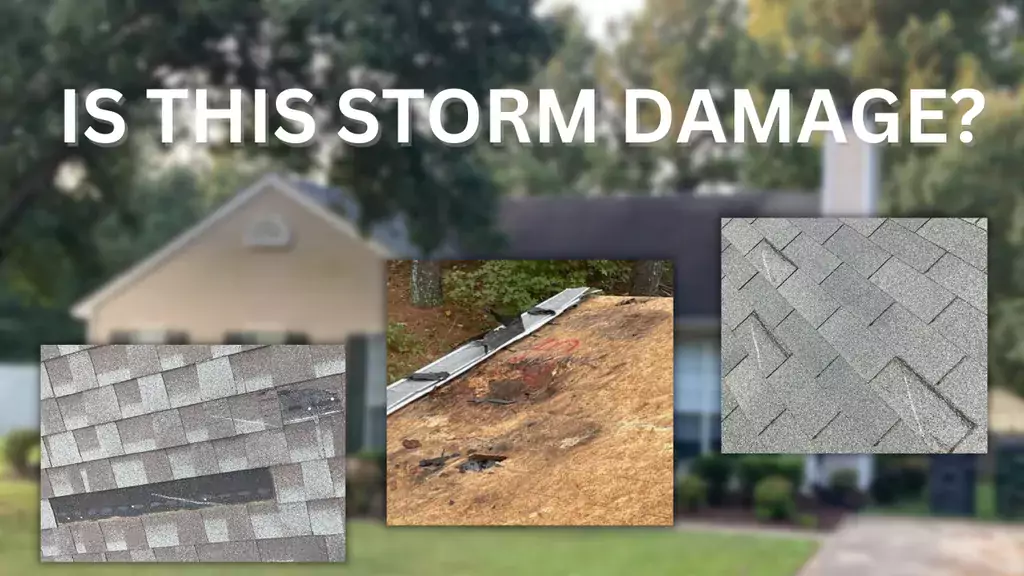
When stormy skies lie ahead, so too could dark days for our roofs. Our roofs are designed to protect us from the elements, but storms wear them down and cause loads of damage that you will likely need to get repaired.
As a roofing company operating in the Raleigh, North Carolina area we see the damage created by all kinds of storms on several different types of roofs. We get intense thunderstorms in the summer, snow and hail in the winter, and even the occasional tornado or hurricane in between.
When these storms come through, they cause new damage and expose pre-existing weak points. In the effort of helping homeowners be prepared for, and deal with roof damage after it happens, we wanted to write this blog about the kinds of roof damage that occurs during storms, and how it might affect the materials you have on your home.
Today, we’re going to talk about:
Let’s get started!
Most storms bring with them some combination of wind, rain, and hail, and can kick up a lot of debris. All of these things can create some damage on your roof, and further expose you to damage from other elements.
Wind may not be what you think of as directly damaging to your roof and home, but strong, straight-line winds might have a heyday with an older roof that’s taken some wear, or some previous damage.
Seeing that your home has received storm damage can be difficult if it occurs in less visible parts of your roof. Wind can blow up under shingles, bending them, and potentially blowing them up and off your roof if the wind is strong enough. One of the main things preventing shingles from being blown off is the asphalt sealant applied to the underside of the shingle. It attaches the shingles to the surface below it, but that wears down over time, opening up the roof to receiving damage.
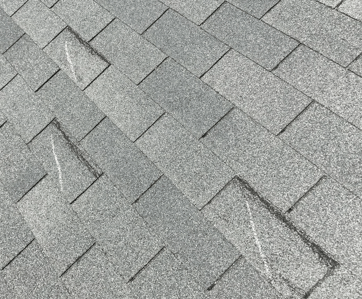
If you have a row of shingles missing, that’s usually a pretty good indicator that you received some very strong and driven wind. Even if the wind wasn’t strong enough to take them off cleanly, you may be able to notice creases where the wind was bending the shingles up. Those areas in both cases will be much weaker, and more susceptible to further damage during the next storm.
Three-tab shingles typically face more wind damage than higher quality designer shingles. Architectural and luxury shingles are much heavier than three-tabs, so they are less likely to be lifted from the roof.
Another thing to watch out for with wind, is the potential for debris to be blown onto the roof, and puncture the shingles and other roofing materials.
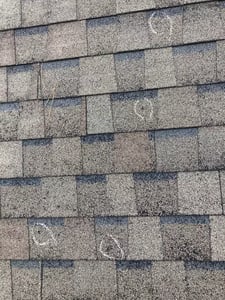
If you’re able to see the sections on your roof where it happened, hail is pretty easy to see, and It’s hard to mistake it for anything else. When hail falls on your roof, you’ll be able to notice the dents that it leaves on softer metal parts of your roof, like vents or flashing, and even on your shingles themselves.
Hail can even cause shingles to crack and break off if they have already received some wear, a result that will greatly increase the likelihood of damage occurring. If you see some dents or cracks in your shingles, you’ll want to get it taken care of pretty quickly, as those small damages can grow much larger with time. If your see that your vents have taken hail damage, they should be replaced as well, as they won’t be able to function the way they are supposed to with that damage.
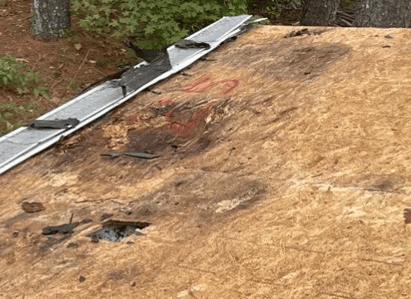
Water damage really starts to become an issue when your roof has already been damaged by wind, hail, or some other debris. Once one of those other things exposes part of the roof, and rain comes, it will find its way into the roof decking, and damage the structure of your roof.
If you notice a patch of wood in your attic that is darker than others, or has started to rot, that’s a sign that water has been eating through the wood and weakening it. Sometimes a roof leak will also work its way down to your ceiling, staining the plaster.
That’s when water damage is the most problematic. Roofing materials are quite heavy, and as water rots the decking underneath it, the integrity of the roof will be compromised. The longer something like that sits, the more you increase the risk of your roof collapsing, especially during weather events like heavy rain or snow.
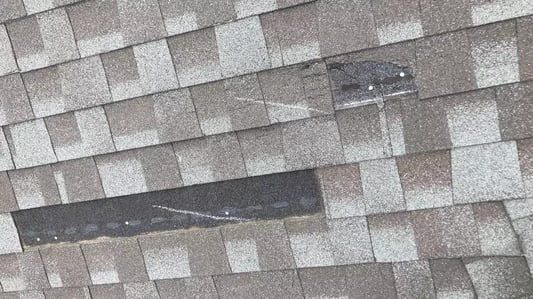
On asphalt shingles, the most common kinds of damage that we see are usually caused by hail, and then wind, depending on what kind of shingle the roof has. If it’s a three-tab shingle, damage is far more likely to occur, as they are much thinner and lighter than architectural shingles or luxury shingles.
Regardless, you should be looking for shingles that are missing, broken or cracked, if you receive high speed winds, heavy rainfall, or hail. Whenever one section of your roof shingles becomes damaged, it creates a chink in the armor of your whole roof system.
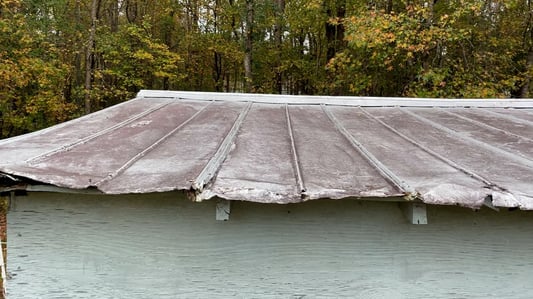
Standing seam metal roof panels should not have quite as much trouble as asphalt shingles, but may still receive dents by particularly large hail, and large debris. Screw-down panel metal roofs are a lot more sensitive to damage, as their fasteners are exposed to the elements.
Metal roofs also have a unique property where the metal flexes as it heats and cools. Standing seam roofs are designed with this in mind, as they are not fastened down to the structure of the roof. The screws in screw down panels though, can begin to work themselves free as the metal expands and contracts, opening themselves up to leaks.
Gutters and roof penetrations like pipes and vents can face a lot of damage from hail and flying debris.
For gutters these dents could affect the ability of the water to properly flow through them and off the roof. If your gutters get clogged, it could cause the water to back up onto the roof, damaging your roof decking, or down onto the ground, which could weaken your home’s foundation.
Roof penetrations like vents, pipes, and skylights are particularly vulnerable to hail damage, and become dented or cracked, reducing their effectiveness and potentially springing a leak.
Hopefully after reading this blog, you’re feeling more confident in your own roofing process.
If we haven’t quite gotten to the storm damage that you think you’ve gotten, check out our blog on the Signs that your Roof has Storm Damage.
On Tops Roofing has been repairing storm damaged roofs for over 30 years, so we’ve got the experience to handle whatever kind of damage your roof has taken.
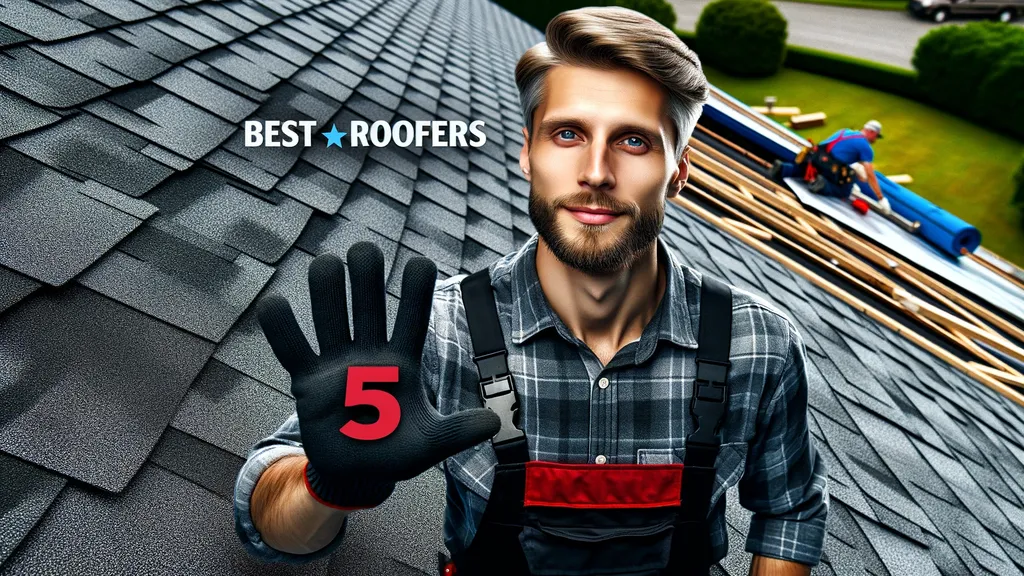
How do you find the best roofers? Ask an experienced roofing contractor who knows all the other roofing contractors in Fayetteville NC!
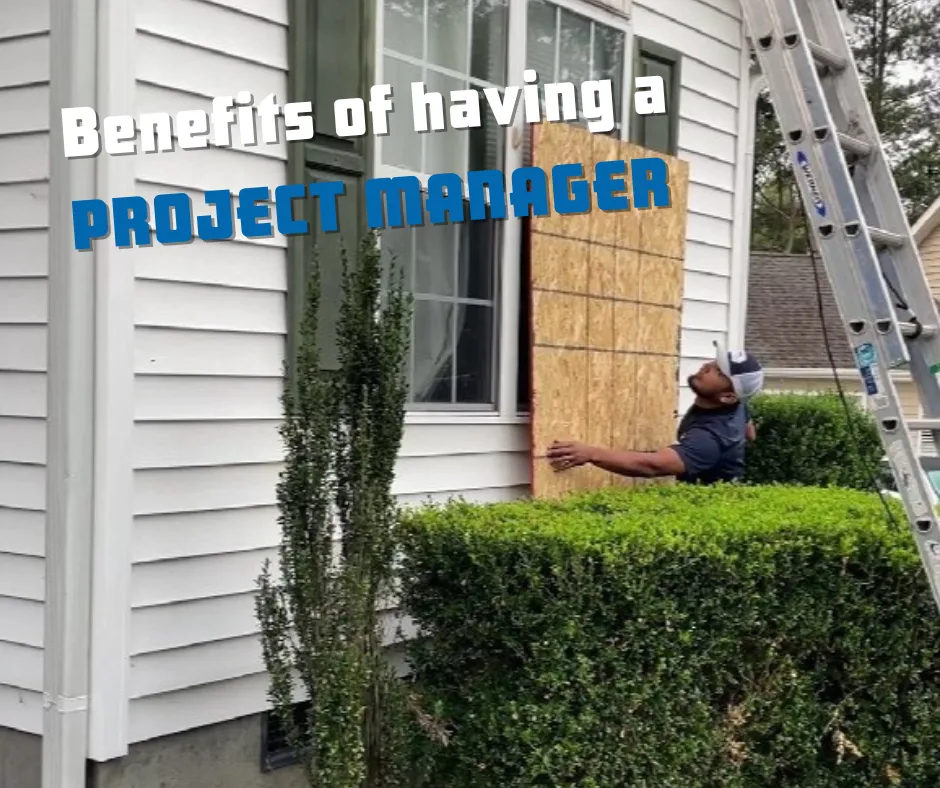
A roof replacement is a substantial undertaking, and the key to a successful project often lies in the hands of the project manager. This individual...
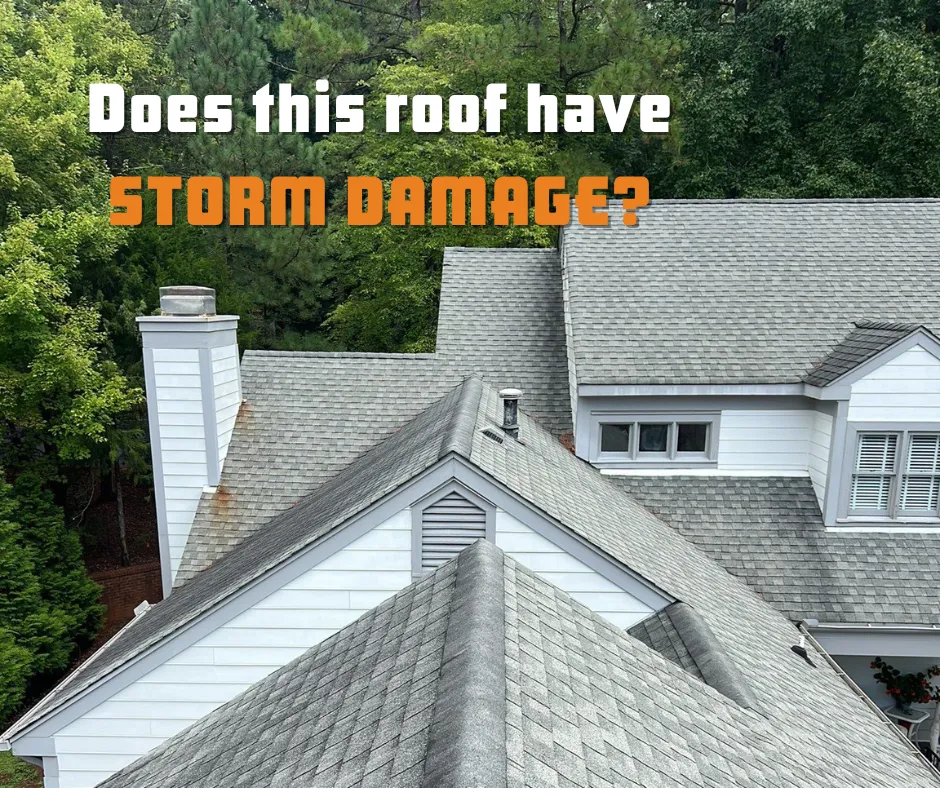
If you’ve recently experienced a storm, you should probably take some time to investigate your roof for signs of damage left by that storm.